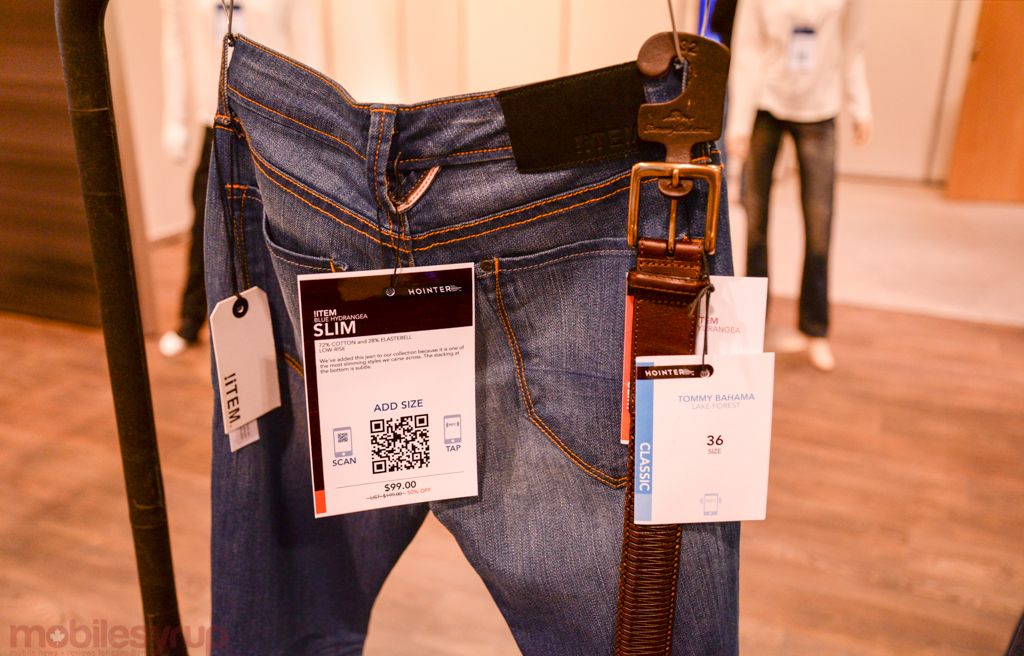
There was a moment, during the rush of people coming in and out of the Retail Experience section of Dx3, where I was tempted to buy a pair of jeans.
Nadia Shouraboura, CEO of Hointer, had set up a pop-up store with her own merchandise — high quality demins, shirts and shoes — to demonstrate not only the ease at which her technology company has disrupted the retail experience, but why the traditional retail model, especially for clothes, is tragically flawed.
The company, which owns a hybrid development shop/clothing store in Seattle, has licensed its omni-focused product line to retailers like Levi’s, which incorporates its eTag NFC and Omnicart tools in its own stores.

The premise, once explained, seems obvious: customers enter a store with items displayed on shelves or stands. They use Hointer’s app, or a white-labeled equivalent, to tap an NFC tag or read a QR code, which brings up the item on the screen.
They can then select a size or similar design that may not be shown — the stores are usually extremely lean, with the bulk of the stock in the MicroWarehouse — which is sent to a Whoosh Fitting Room, which uses a series of backend robotics to deliver the item down a chute (hence the “whoosh” name. If it fits, great: you buy it on your phone; if it doesn’t, you dump it in a bin and select another. When you’re finished, you can buy it on the device and walk out of the store.

It’s an extremely strange experience, and a successful experiment in anti-shopping shopping. With support for Android, iOS and Windows Phone, integration in the front- and back-end is incredibly easy for the average small-to-medium business. Shouraboura also demonstrated social integration with Pinterest, which allows users to add products to a wishlist, even out of the store, and be rewarded with more accurate suggestions when they return.
The notion of the employee-free retail experience, complete with robotic completion and self-checkout, has been in the wings for a few years now, but the idea of showrooming really took it to the next level. Shouraboura said the key to conversion — turning trying out into walking out with product — is making sure customers don’t merely look at a tag, load up Amazon and buy it from them for 20% less. To that end, the company has implemented a system that dynamically alters the cost of products when discounts are reflected at other retailers. It’s not price-matching, it’s algorithmic tantalizing.

Hointer is currently growing, and is looking for its first Canadian partner, but it’s the prospect of a retail experience free from nagging salespeople and easy purchases that will get larger companies involved. Shouraboura says her single retail shop is more an experiment in trial and error; the developers see how the customers act, and how they respond to changes, and either implement them or scrap them.
I didn’t end up buying the jeans, but I walked away feeling good about the future of retail.


